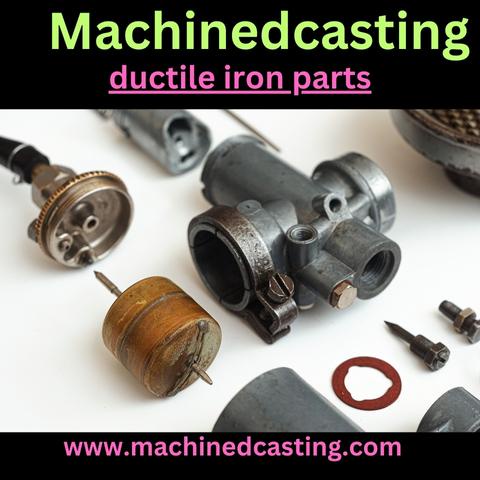Ductile iron parts are widely used in various industries due to their excellent mechanical properties, versatility, and cost-effectiveness. This comprehensive guide will delve into the world of ductile iron parts, covering its characteristics, manufacturing processes, and diverse applications.
1. Understanding Ductile Iron
Ductile iron, also known as nodular cast iron or spheroidal graphite iron, is a type of cast iron that exhibits improved ductility and toughness compared to traditional gray cast iron. This enhanced ductility is achieved by adding trace amounts of magnesium and cerium during the manufacturing process. Key characteristics of ductile iron include:
-
High Strength: Ductile iron has impressive tensile and yield strength, making it suitable for heavy-duty applications.
-
Exceptional Ductility: It can deform under stress without fracturing, making it highly resilient.
-
Good Machinability: Ductile iron is relatively easy to machine and provides good wear resistance.
-
Corrosion Resistance: It has better corrosion resistance compared to gray cast iron.
2. Manufacturing Processes
The manufacturing of ductile iron parts involves several critical steps:
-
Material Selection: High-quality scrap iron is selected, along with ferrosilicon, rare earth elements, and a nodularizing agent.
-
Melting and Inoculation: The materials are melted in a furnace and inoculated with the nodularizing agent to encourage the formation of graphite nodules.
-
Casting: The molten iron is poured into molds, where it solidifies in the desired shape.
-
Annealing: Heat treatment is often applied to relieve internal stresses and improve mechanical properties.
-
Machining and Finishing: Ductile iron parts may undergo additional machining and finishing processes to meet specific requirements.
3. Applications of Ductile Iron Parts
Ductile iron parts find applications in a wide range of industries, owing to their durability and cost-effectiveness:
-
Automotive Industry: Ductile iron is used in engine components, suspension parts, and brake components due to its strength and wear resistance.
-
Construction Industry: It's used in structural components, water pipes, and sewerage systems for its load-bearing capabilities and corrosion resistance.
-
Agriculture: Ductile iron parts are employed in the manufacturing of farming equipment like plows and tractor parts.
-
Oil and Gas Sector: It's used for pipelines, valves, and fittings due to its corrosion resistance in aggressive environments.
-
Water and Wastewater: Ductile iron pipes are commonly used for water distribution and sewage systems due to their longevity and strength.
4. Advantages of Ductile Iron Parts
Ductile iron offers several advantages, including:
-
Cost-Effective: Ductile iron parts are often more cost-effective than alternatives like steel.
-
Versatility: They can be cast into complex shapes and sizes to meet specific requirements.
-
Durability: Ductile iron parts are long-lasting and capable of withstanding heavy loads.
-
Corrosion Resistance: They perform well in environments where corrosion is a concern.
5. Maintenance and Care
To ensure the longevity of ductile iron parts, regular maintenance and care are necessary. This may include periodic inspections, surface treatments to prevent corrosion, and following the manufacturer's guidelines for maintenance and lubrication.
Conclusion
Ductile iron parts are vital components in numerous industries, offering exceptional strength, durability, and cost-effectiveness. Understanding the characteristics, manufacturing processes, and applications of ductile iron is crucial for selecting the right materials for your projects. Whether you're in the automotive, construction, or agricultural sector, ductile iron can provide the performance and reliability you need.


No comments yet